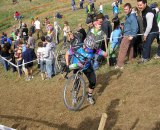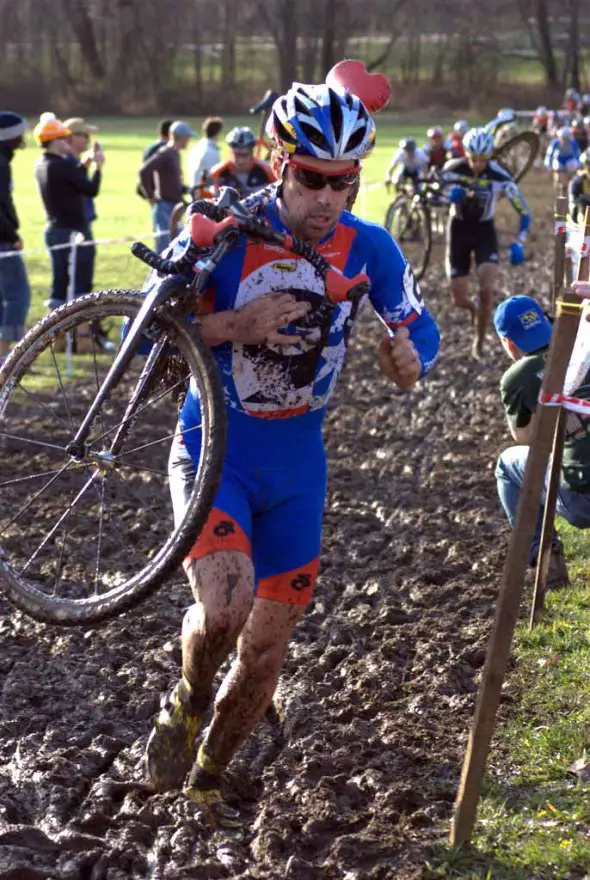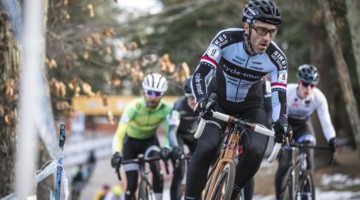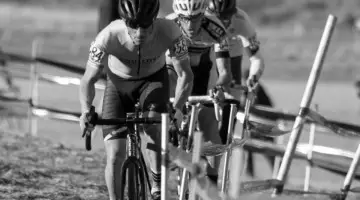It’s the debate of the ages: should you be incorporating running into your cyclocross training program? We run during our races constantly: over the barriers, through the mud, across the beach, up the hill. For a pure cyclist with no running experience, that can be an overwhelming addition to a race.
But when it comes to whether or not running should be a part of training, it seems like everyone has a different opinion, and the answers vary depending on whether you’re talking about a new rider versus a veteran. It also depends on weather, race courses, and how much time you have to devote to training. In some cases, running is deemed as an extraneous exercise, and in others, an absolute necessity. So as someone training for the upcoming season, what should you be doing?
We went to the source and asked some of the pros to weigh in. The input ranges from long-time racers and crazy-fast juniors to coaches and authors.
Georgia Gould:
“I do run a fair amount during cyclocross season, but I don’t think it’s necessary to incorporate running into a ’cross training program; rarely does a cyclocross race come down to who is a stronger runner. I enjoy running because it is a great way to stay mentally and physically fresh; after a full MTB season, I am usually excited to spend a few days a week off the bike. Also, since I don’t ride the trainer in the winter, running in crappy weather (rain, sleet, snow, cold) is usually more enjoyable than riding in crappy weather.”
Want more on Georgia’s training? Read Women’s Wednesdays: Georgia Gould.
Luke Keough:
“I ran as a kid. I was always athletic so I would train to run. As far as cyclocross specifically, I do beach runs in the sand because it’s just like running in mud. After racing in Europe as a junior for a while, I saw that I was losing ground to guys who could run. They’d get off the bike and get a 30 second gap. I did start training for running, like one mile once or twice a week, with perhaps a little interval training throughout that mile, but I don’t go over that.”
Luke may only be 19, but he’s making a name for himself in cycling. Read about him in In The Saddle With Luke Keough.
Amy Dombroski:
“I train by running. I try for 20 minutes every morning or every other. It’s also handy to have that muscle memory if you’re short on time when traveling and don’t have the time to get out and spin the legs. There seems to be more running in Euro courses so I have felt an increased need to have the leg speed on foot. It’s important for any ’cross rider to do a bit of running so it is not such a shock when you take those first steps.”
Amy Dombroski was our first woman in our Women’s Wednesday feature, so you can read more about her racing and training habits there.
Tim Johnson:
“I’ll tell you what I do — I haven’t actually done any running in probably 10 years. But I think it is well worth it for people who don’t feel comfortable running and it also depends on what kind of races. When I’m coming up on races with more running, I’ll do more running at cyclocross training. Going out for an hour-long run doesn’t do anything, especially if you’re able to train on the bike and get your cardio on the bike. The running we do is so short and so intense that a jog doesn’t do much for it.
The best thing I can say for a new person in cyclocross is to not forget to get on and off your bike. In ’cross, whether on race weekends or at practice, the point of running for us in a cyclocross race is that all you have to do is get on and off quickly. That’s being comfortable transitioning. But if you want to do a brick, you don’t have to go extreme. Going for a 15 minute run while riding might be perfect.”
Can’t get enough Tim Johnson? Neither can the rest of America! Read about his many projects in In The Saddle With Tim Johnson.
Adam Myerson:
“It depends on so many factors that I don’t think there is one right answer. I think that how much running you do, when you do it. and how you do it depends on where you live, the weather conditions you’re faced with, and what your courses are like. Is there a lot of running in the courses you’re racing on? If you live in the Pacific Northwest, you probably need to do more running training than if you live in the mid-Atlantic. The minimum that you need to run is enough so that the running in the race does not cause you more damage. You want to run enough to become adapted to the running movement so that you’re comfortable running in the race and it won’t take you all of the following week to recover. I don’t think most people should run to the point where they’re winning races because of the running alone.
I think most people can get all of the running they need in a specific way. So make sure that there’s a run-up in your cross workout. If you do a skills practice, run-ups could be part of your practice. But if you’re in the adaptive period where you’re trying to get used to the motion, just jog 20 minutes without your bike.”
Want to find out what else Adam thinks about cyclocross training as a racer and a coach? Check out In The Saddle With Adam Myerson.
Emma White:
“I do run. I run for 20 minutes twice a week throughout the season with a small hill I use for sprinting to get my muscles moving. I think cyclocross racers of all levels would benifit from running both before and during the season. I also think basic exercises like hopping, skipping, and jumping are benificial for the sport of cyclocross.”
Want more on 13-year-old powerhouse Emma’s training? Read Women’s Wednesdays: Emma White.
Niels Albert:
“Most of the time I run once a week for half an hour. During preparation I do a little bit of running, a little bit of sprinting, a little bit of up and down. We make some difficult exercises for a bit of power in the legs. But mostly, during the season, it’s just half an hour of running, and always without the bike.”
Want more on this Belgian pro’s training? Read In The Saddle With Niels Albert.
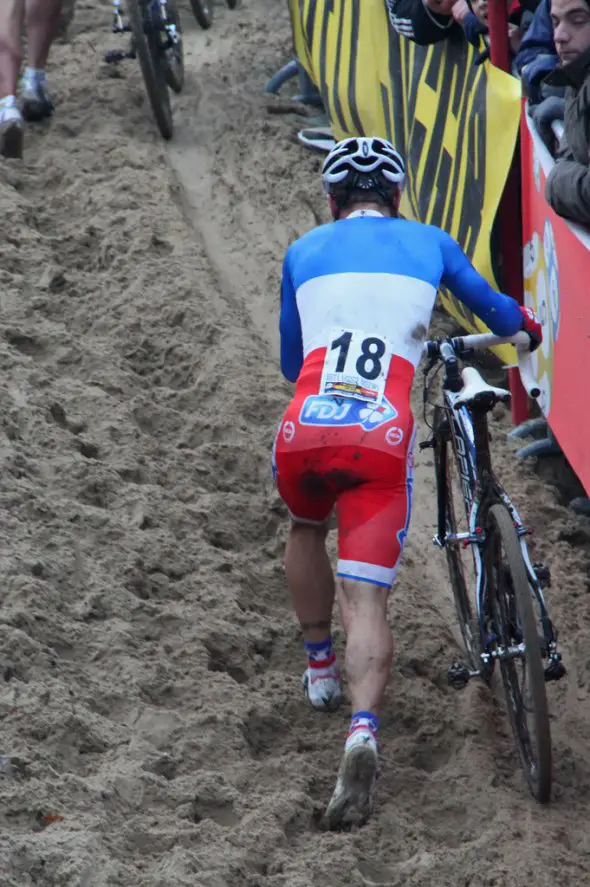
Running can be an important part of the race, like here at the World Cup Cyclocross Koksijde © sjaradona
Simon Burney:
“Running for sure!
My opinion is that a little running regularly (say, 15-20 minutes per day, three times a week) can do no harm and will not detract from or impair bike riding ability, and it’s generally a great exercise that does all the things cycling doesn’t (weight bearing, full body exercise). Additionally, unless a cyclocross race is on a particularly badly planned circuit, you are going to spend some time each lap on your feet, more so in European races than US maybe, and therefore it’s something that should be part of a training plan.
I like doing it first thing in the morning to wake up, but it’s also something that one can easily fit into a work lunch hour, or do in the dark more safely than a bike session. It’s quick, effective, and doesn’t require any equipment other than a decent pair of shoes. If you are happy running, then when you get the muddy course or steep run-up, you’ll most likely be better prepared than the guy behind you! So my first thought would be why not run?”
Simon is the author of one of the top books on cyclocross, Cyclocross: Training and Technique.













